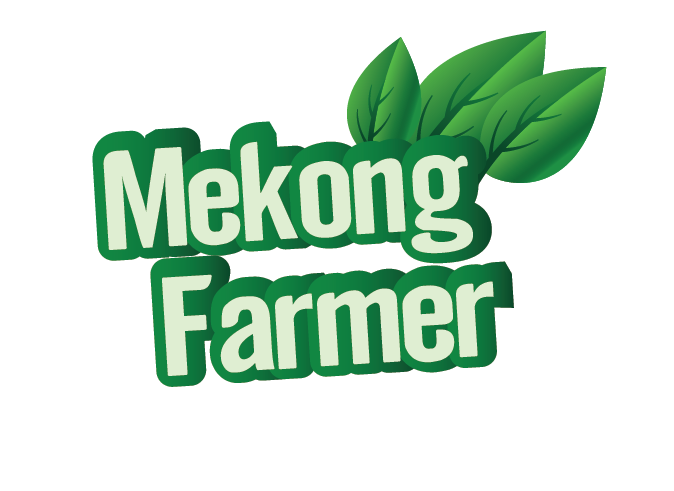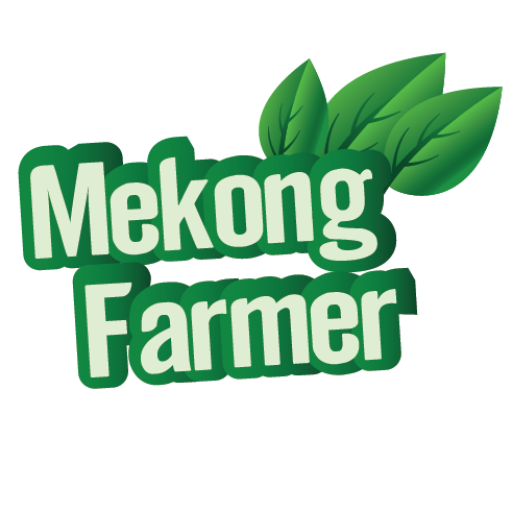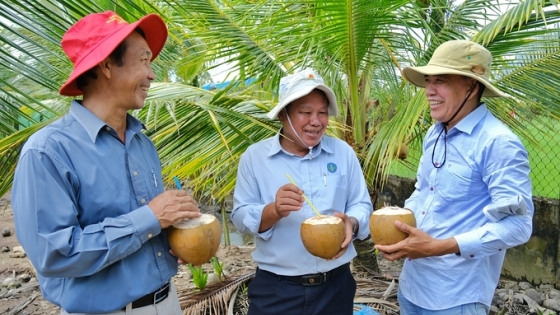(VAN) The potentials and advantages of fresh coconut, which are included in the recent protocol, were discussed by Vietnam Agriculture Newspaper and Mr. Nguyen Quoc Manh, Deputy Director of the Department of Crops Production.
In 2023, Vietnam coconut was eligible for export to the United States; however, this year, China has been the recipient. What are the challenges in the sustainable development of this industry, and how do you assess the quality of this product in light of these positive signs?
In the top 10 countries with the largest coconut area and production in the world, Vietnam is ranked sixth, following the Philippines, Indonesia, India, Brazil, and Sri Lanka. The country has a total area of nearly 200,000ha, which is nearly 50,000 ha more than in 2010, and an output of 2.1 million tons. The coconut area of Vietnam has the highest annual growth rate in the group, with a rate of 2.5% per year
from 2010 to 2021. The International Coconut Community (ICC) has expressed its great regard for the exceptional quality of Vietnamese coconut.
Vietnamese coconut was approved for exportation to the United States in 2023. This indicates that the quality, sanitary, and safety of Vietnam’s coconut satisfied the criteria and regulations of American markets, which are among the most stringent in the business.
The negotiation of the Protocol on plant quarantine requirements for fresh coconut exported from Vietnam was finalized by Vietnam and China on June 6, 2024. Vietnam’s coconut was authorized for export to China by August 19. This is a substantial market with escalating standards for the quality of imported agricultural products. This has demonstrated the enhancement of the quality and quantity of Vietnamese coconut.
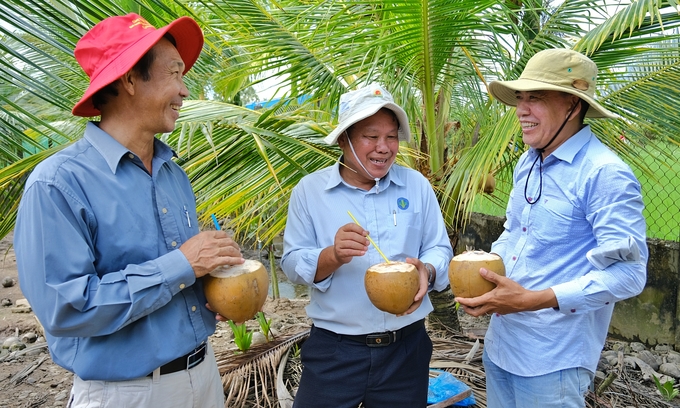
Soc Trang Province’s Department of Crop Production and Plant Protection inspects coconut production in the area. Photo: Bao Thang.
Nevertheless, the linking coconut area remains low as a result of the small and fragmented scale. The majority of the coconut area in Vietnam is cultivated by households, which presents a challenge for linking organizations because each household has its own cultivation and harvest process. Uniform standardization and quality assurance require quite a lot of time.
In addition, the commodity industry is experiencing a scarcity of cooperatives or effective linking models, and infrastructure and support technology are still modest. This has resulted in challenges in the collection, processing, and delivery of coconuts, as well as the linking of coconut plantation areas. Not to mention, the post-harvest preservation is still limited, resulting in a substantial loss.
The final concern is the absence of export orientation and market information. Several coconut producers have yet to comprehend the import market’s requirements, resulting in production that lacks market signals, thereby diminishing economic effectiveness and linking capabilities.
According to certain sources, the coconut industry has not yet established a sustainable development strategy or long-term program. Therefore, what is the truth?
In reality, coconut trees flourished in Vietnam on an area of 350,000 hectares between 1990 and 1991. However, the coconut tree’s development was not given the attention it deserved, and as a result, the coconut area progressively decreased until the recent years, when it began to show signs of recovery.
The coconut was recognized as one of the six primary industrial crops by MARD in Decision No.431, which approved the scheme for the development of key industrial crops until 2030. MARD recognizes the potential and strengths of this tree.
The objective of the initiative is to increase the coconut cultivation area to 195,000-210,000 hectares by 2030. The majority of the 170,000-175,000 ha coconut plantation area is located in the Mekong Delta, while the South Central Coast ranges from 16,000 to 20,000 ha. The North Central and Southeast regions are scattered with coconut plantations.
In addition to the planning process, the agriculture industry will encourage the introduction of new coconut varieties into the production of Cocos Nucifera, Malayan coconut, and other varieties. By 2030, the objective is to cultivate over 30% of the coconut area in accordance with the GAP process or an equivalent method. The coconut plantation unit code covers approximately 30% of the land area.
In order to enhance the value per unit of production land, technical measures for intercropping (cocoa, fruit trees, etc.) and interraising (aquaculture, poultry, etc.) with coconut cultivation are being encouraged. Simultaneously, endeavors are underway to integrate the development of coconut-growing regions with ecotourism, local cuisine, and the production of local OCOP products. In addition, the establishment of production bases that cater to tourism, coconut processing facilities, and craft villages is being prioritized.
Consequently, a distinct and precise development trajectory for coconut has been established for the subsequent five to seven years. Furthermore, the localities will establish their development plans and policies to promote the coconut industry’s future growth through the allotted projects.
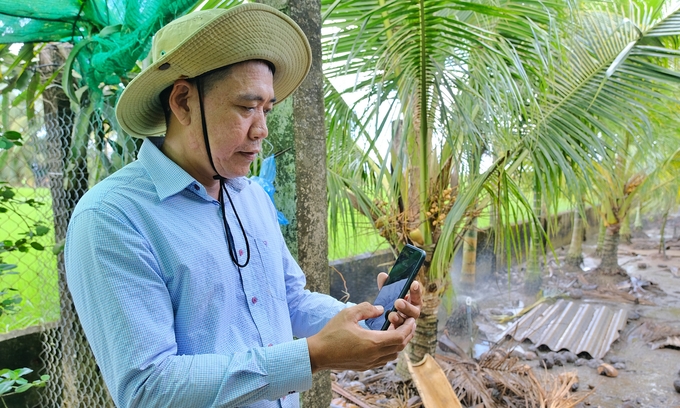
People control the automatic irrigation system in the coconut garden. Photo: Bao Thang.
In addition to fresh coconuts, there are numerous by-products that can be employed for the purpose of production and recycling. In order to encourage investment in the coconut industry’s deep processing, certain businesses have suggested the implementation of regulations that restrict the export of raw materials. What is your perspective on this proposal?
In order to guarantee the highest possible value for producers and businesses, it is imperative that the export of fresh coconuts and thoroughly processed coconut products be given the necessary attention. We have been extremely persistent in our efforts to negotiate with importing countries in order to expand the markets for fresh coconuts. Consequently, it is now imperative to establish fresh coconut-growing regions for export that adhere to the rigorous standards of the United States, China, and other countries.
As for processed coconuts, the development strategy for key industrial crops until 2030 explicitly delineates the comprehensive development of two product lines: fresh coconut and processed coconut. At the same time, the coconut processing industry should focus on the rapid expansion of high-value-added products and new products, such as desiccated coconut, activated coconut shell charcoal, biochar, smokeless charcoal, coconut milk powder, coconut milk, coconut cream, coconut oil, coconut coir mats, coconut coir mattresses, handicrafts, and canned coconut water. The industry should also employ advanced technology and diversify its product line.
A network of stores that sell handicrafts and specialty products made from coconuts should accompany this development. It is imperative to provide training to labor in the areas of coconut-based handicrafts, new apparatus and technology, product design, and market consumption in order to proactively plan the production and business of coconut products.
On the basis of this foundation, provinces should designate areas for concentrated coconut production and evaluate the cultivation of coconut in regions that are unsuitable or have low efficiency. This will enable the development of products with a higher market value and alter crop structures.
Localities should also persist in the implementation of policies that foster the formation of production linkages and attract businesses to invest in the development of coconut production, from the construction of raw material areas to the processing and consumption of products. Cooperatives and cooperative organizations serve as intermediaries between farmers and businesses during this process.
The development of coconut production areas, the implementation of GAP (Good Agricultural Practices) or equivalent processes, and the establishment of planting area codes to trace product origins are all essential for households to establish active connections with businesses through cooperatives and cooperative organizations.
The development of the coconut industry should integrate circular economy models, maximizing the utilization of by-products during production and processing to support agricultural production, as it is a crop with numerous by-products.
Research suggests that coconut products have a wide range of markets. Coconut oil is concentrated in markets such as Indonesia and Argentina, for example. Desiccated coconut, tinned coconut water, and coconut milk are exceedingly popular in the United States, Japan, the European Union, and South Korea. Activated charcoal is permissible for exportation to numerous Asian nations and South America. The United States, China, Japan, South Korea, Australia, and the United Arab Emirates are among the markets for raw coconuts.
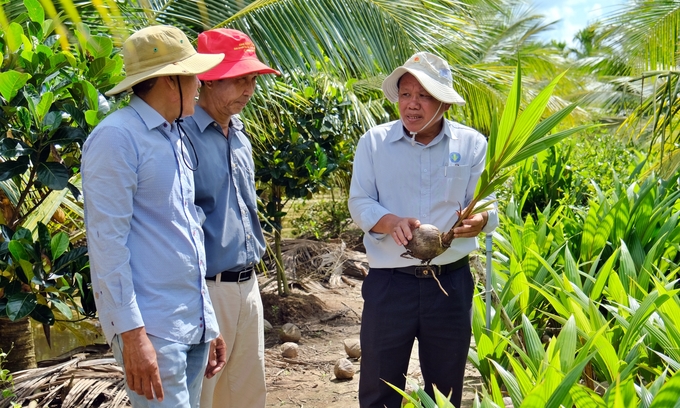
Coconut nursery in Soc Trang province. Photo: Bao Thang.
The official export of fresh coconuts to China is a substantial advancement. What suggestions do you have for enterprises and municipalities to proactively capitalize on this trend?
Investing in deep processing, brand building, enhancing cooperation, and incorporating new technologies is the immediate objective. These measures will contribute to the enhancement of the value of processed coconut products and establish a strong foundation for the sustainable growth of Vietnam’s coconut industry.
Localities and enterprises should concurrently invest in infrastructure and logistics while developing coconut-growing areas for export in the short term. In the long term, it is imperative to encourage the diversification, development, and research of processed coconut products. Vietnam can concentrate on a variety of products, including coconut oil, coconut milk, coconut powder, coconut shell products, coconut tea, and coconut treats, in light of its current advantages.
Stakeholders should allocate resources to brand development, packaging, and labeling for products in addition to promoting and cooperating to establish value chains for products and certified raw material areas. Additionally, in order to expand, access, and promote markets, it is imperative to engage in fairs, exhibitions, and leverage e-commerce channels.
Agriculture News | Agri Products Price
